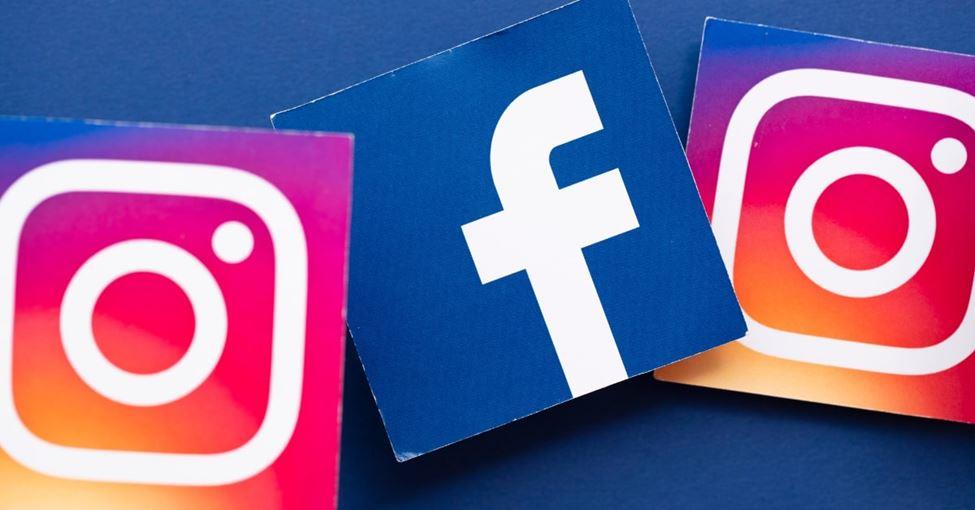
We see a 13-year-old kid go viral on YouTube and form opinions about how simple social media marketing is.
To be honest, it’s all a myth! What worked for them may not work for you, and that is the essence of social media.
While scrolling through your social media platforms, you may have noticed some campaigns that are constantly running, such as the donatekart campaign, the blacklivesmatter campaign, or the Spotify Only You campaign. But have you ever done a thorough examination of what it takes to run an effective campaign?
While it may appear simple on the surface, the entire back-end requires a lot of hard work and process streamlining. A successful social media marketing campaign requires meticulous planning and consistent effort.
Whether you’re launching a new brand product, announcing a new feature of your device, or promoting a vacation, it all starts with a connection to your target audience via these campaigns.
But how will you ensure the success of your social media campaign?
Although excellent campaigns take time and effort, there are ten tried-and-true steps you can follow to create and launch a great using social media campaign for your local business and achieve your desired goals.
So, let’s get started!
Table of Contents
The 10 Steps To A Successful Social Media Campaign
Goal-setting For Your Social Media Campaign
Before you start a campaign, ask yourself, “What are my expectations from this campaign?” Why am I doing it? By answering this question, you will gain clarity on the objectives you have set for this campaign. Ideally, the goal of any social media campaign falls into one of two categories:
- Do you want to raise brand awareness and boost sales?
- Fighting for a societal cause
- To promote certain types of services
- Introducing a new product or feature
- to increase traffic to your website
Once you’ve decided on a category, you can move on to the specifics, which are attainable and time-bound tasks. For example, how many new followers do you want on your social media platform? Or how about brand awareness?
Remember that the clarity of your objectives can make or break your campaign!
Analyze Your Market Competitors
The next important step in any social media campaign is to research and analyze your competitors. Even if you are creating the campaign for the nth time, you should always keep an eye on your competition. This step will inform you of the dos and don’ts before you begin working on your campaign.
Examine the content produced by your competitors.
- Do they make tutorials or do they prefer Q&A sessions?
- What kind of subject do they choose?
- When do they post content to social media?
- What types of posts generate the most interest from the audience?
- How much energy are they putting into their campaign; are they leading aggressively or opting for a subtle path?
You can collect data for the research either manually or using a research tool. Remember that these insights are priceless and can always give you an advantage over your competitors.
Defining Buyer Personas
Even if you follow the rest of the steps and create the most impactful campaign content ever, if you are not targeting the right audience, all of your efforts will be for naught. As a result, it is critical to define and target your productive audience.
You can accomplish this by developing a buyer persona, which is a document that contains all of the necessary information about your potential customers. Using this list, you can create and send messages to customers who are interested in your social media campaign.
A buyer persona should ideally include the following elements:
- Name
- Gender
- Age
- Sex
- Demographics
- Income
- Hobbies
- Interested social media platform
- How much time do they spend on the these platforms
Different social media platforms have their own analytics tools. For example, Facebook has Audience Insights, and Instagram has its own.
Select Your Social Media Platform

It is critical to select the best social media channel for a successful social media campaign.
Each social media platform serves a distinct function. Instagram, for example, is for creative content creators, Linkedin is for B2B companies, Facebook is for social community building, and so on. So, consider what kind of services you want to provide to your customers and then select a platform accordingly.
You can also track your previous performance results on your website metrics. Determine which channel received the majority of the traffic. Which channel brought in the most leads? What were the flaws? Analyze every small detail and then correct any mistakes.
By doing these things, you will be able to reach your target audience and get the most out of it.
Use Different Content Forms to Promote One Message
Different strategies work for different social media platforms, and the same is true for content creation. For example, content that works well on Instagram may not work well on Twitter or Facebook, and vice versa.
As a result, it is best to create various types of content that share a common goal but differ in their mode of communication or delivery. You can experiment with different graphics, videos, memes, blog posts, or voiceovers to see what works best for your campaign.
This way, you can keep your audience both engaged and entertained.
Identify Your Campaign’s Unique Hashtag
As we all know, hashtags are powerful ways for accelerating the growth of your posts on social media platforms such as Twitter and Instagram. As a result, they can increase engagement and drive more traffic to your page.
However, it is critical to creating a hashtag that is distinct and accurately represents your brand. You can easily track user-generated content and analyze engagement rates with branded hashtags.
But don’t make the mistake of substituting the branded hashtag for common hashtags. Always use a mix of the two. Furthermore, when selecting a hashtag, ensure that the appropriate ratio of the high, medium, and low competitive hashtags is used. This will also broaden your audience.
Organize Your Social Media Calendar
Timing is everything when it comes to making your campaign a success. This is why you should always have a social media calendar with you. The calendar will assist you in managing the uploading of content on each social platform in a timely manner from start to finish.
You can use the social media calendar in the following ways:
- Content creation and uploading to social media platforms on time.
- Schedule your posts and upload them at times when your audience is most active.
- Overview of team members’ sharing of updates.
- By investigating content metrics, you can increase or decrease the frequency with which you share content on social media platforms.
Overall, your social media calendar will ensure that you don’t miss anything important for your campaign while making the most of your time.
Keep Promotional And Non-Promotional Content Balanced
People frequently forget to maintain a balance of promotional and non-promotional content and, without hesitation, continue to share promotional content on their social media handles. As a result, their followers lose interest in them and eventually unfollow them.
The social media algorithms are designed in such a way that they naturally support content that appears entertaining to the audience. You should stop imposing content on your subscribers. Rather, you can begin sharing content on your platform from the most trusted sources that interest you and your potential audience. This way, your followers may see content that you wanted them to see that they would have missed otherwise.
As a result, you will have a strong and long-term relationship with your followers as well as fellow experts.
Utilize The Social Media Tools Effectively
It’s great that you can handle the entire social media campaign on your own. However, it will be even more effective if you use the proper tools throughout the process. Believe it or not, you will require tools that will increase your productivity as well as the overall quality of your campaign at every stage of your campaign.
For instance, starting with the,
Content Creation: As we all know, content with media (in the form of an image, video, or gif) has higher audience retention and chances of reposting or retweeting than those without. Canva or Picsart are two powerful tools for creating such content. These tools are available in both free and paid versions. However, their free versions are adequate for meeting your basic needs.
Curation of relevant content: Sharing relevant content on your social media profiles is just as important as creating relevant content. Finding such relevant content manually can be time-consuming. Curata, you can always use this tool to improve your efficiency.
Social Media Organizer: Tasks such as post scheduling, uploading time, team collaboration, and gathering updates require proper management. You can meet all of these requirements by using a tool like Agorapulse.
Social Media Analytics: Analytics can help you figure out where you’re going wrong. With a social media analytical tool such as Google Analytics, you can track and monitor your performance and use the time saved to improve your campaign.
Track Performance Of Your Campaign
Tracking the performance of your social media campaign can help you determine whether or not your campaign will be successful. Furthermore, it may allow you to strategize your strategy while the campaign is running.
Another benefit it can provide is for future projects. You can make the necessary changes in your next campaign (remember that each campaign demands different needs). A different tool, for example, or a different strategy.
Conclusion
That concludes the steps you must take to ensure the success of your social media campaign. There will undoubtedly be additional steps. However, the ones listed above are the most important to follow.
We hope these steps assist you in carrying out your campaign as effectively as possible! If you know of any other tips or tricks that can produce results, please share them in the comments section below. We look forward to hearing from you!
Frequently Asked Questions
How do I start an online campaign?
You can always enlist the help of rapidly growing social media channels to launch an online campaign. To build a strong online community, plan ahead of time, execute on time, and combine your online and offline efforts.
What are the three key elements of a campaign strategy?
There are several steps to running a successful campaign, but three key elements cannot be overlooked: campaign objectives, target audience, and communicating the purpose of running a campaign to your potential customers.
What are the don’ts of running a social media campaign?
Before beginning a campaign, conduct thorough research on your competitors and the channels you will be using to reach them. Remember that “delivering the right content through the wrong medium” or “delivering the wrong content to the right medium” will not benefit your campaign.
What is the social media strategy cycle?
The entire social media planning cycle allows social marketers to make plans in order to locate the potential audience that is best suited for their campaign objectives and inform them about the services you are interested in offering to them.
What is an example of a good social media campaign?
One of the best examples you can find in your neighborhood is Apple’s “Shot on iPhone” campaign. Essentially, the company encouraged user-generated content while indirectly promoting the enticing details of the iPhone series. During the course of this campaign, the company employs its own branded hashtag, #ShotoniPhone. At this point, content creators have created a strong community around this hashtag, assisting the company in meeting its campaign objectives.
What are 2 reasons why businesses should use social media marketing?
There are billions of people who use social media for various purposes and the number is still growing very rapidly. Meanwhile, a startup or even an established business can use these social media platforms to reach out to their target audience. They can then create content around them and promote their services. Although it will not be easy, it will be easier than the traditional method of marketing used in the past.

Upma is Seo at JoomDev Company. She loves exploring the latest technology trends. She has profound experience in working for IT organizations and She loves turning her ideas into reality by developing WordPress plugins like Mighty Addons for Elementor, which helps her power Elementor’s page builder.